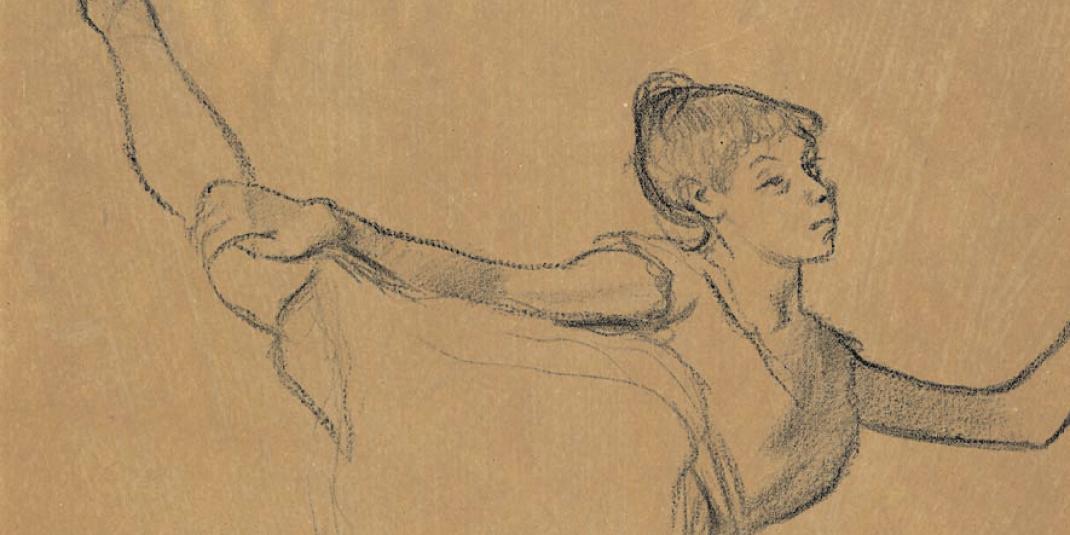
From Delacroix to Gauguin
On the occasion of the new presentation of 19th-century painting in our museum, a rehanging that also shows French art in a new light, and of the spectacular acquisition in 2003 of four colour woodcuts by Paul Gauguin from his famous series »NOA NOA«, made possible by the Campe’sche Historische Kunststiftung, the Hamburger Kunsthalle’s Department of Prints, Drawings and Photography presents a selection of French 19th-century prints from its own collection.
Paul Gauguin occupies an exceptional position in French art of the 19th century. On returning from his first trip to Tahiti (1891–93), he wrote a lengthy text entitled »NOA NOA«, aimed at promoting his new pictures from the South Seas. Gauguin’s account continues to fascinate readers today with its authentic insights into the natives’ simple way of life. These experiences and the influence of the strong, radiant colours of the South Seas had given Gauguin’s art new impetus. Although a book was never made, the woodcuts were printed in Paris in a very small number of impressions – no more than 25 – in the winter of 1893/94. The artist, who had gone to Tahiti in search of the mythical origins of mankind, devoted himself intensively to ‘primitive art’ and its powerful modes of expression. The woodcuts in the series »NOA NOA« give poetic expression to this enthusiasm.
The group of woodcuts by Gauguin is supplemented by works by the artist’s contemporaries and also by outstanding examples of French prints from previous decades. Among the artists represented are Eugène Delacroix, Paul Gavarni, Honoré Daumier, Félix Bracquemond, Édouard Manet, Camille Corot, Jean François Millet, Camille Pissarro, Jules Jacquemart, James Tissot, Alexandre Lunois, Edgar Degas, Paul Cézanne, Suzanne Valadon, Henri de Toulouse-Lautrec, Félicien Rops, Maurice Denis, Édouard Vuillard, Pierre Bonnard and Auguste Renoir.
The lithographs, etchings and woodcuts on show provide an exemplary survey of the key movements within French art in the period from the July revolution of 1830 to the Belle Époque at the turn of the century: Romanticism, Realism, Impressionism, Pointillism and Symbolism. In the decades following 1860 many artists rediscovered old printmaking techniques and, embracing the prevailing trend of stylistic pluralism, created an original and independent form of artist’s print.
These Peintre-Graveurs (Painter-Engravers), whose prints were based on their own designs, vehemently opposed the predominance of contemporary photography. Their aim was to contribute to the general formation of good taste across broad strata of society, and in this way motifs taken from the modern world were popularised. The artists succeeded in producing brilliant, technically refined prints that were often remarkably convincing imitations of watercolours or drawings in chalk, pencil, pen or ink. Particularly far-reaching was the unstoppable advance of the relatively new technique of lithography, which went on to penetrate all areas of art.
Visitors to this special exhibition will discover treasures of French art being shown here once again after a long period of absence.







